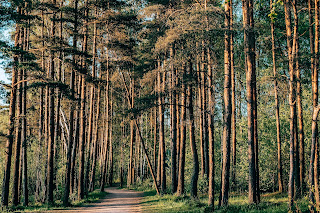Introduction:
Nestled in the middle of lush, peaceful forests and rolling landscapes is a sight that appeals to the senses and the imagination alike: towering trees. The earthly grace of nature in its purest form is embodied by these towering giants, rising for the heavens with their sweeping branches and intimidating size. This piece takes the reader on a tour through the fascinating world of tall trees, examining its importance, beauty, and close relationship to the natural world.
The Essence of Towering Trees:
Towering trees are recognized by their exceptional height, age, and ecological value. They are also known as old-growth woods or canopy giants. Standing as living monuments to the tenacity and majesty of nature, these towering sentinels of the forest include the majestic redwoods of California, the enormous sequoias of the Sierra Nevada, and the ancient cedars of the Pacific Northwest.
Seeing these enormous creatures, whose roots reach far into the ground and whose canopy reaches high into the sky, one cannot not but feel humbled. Every tree is a living example of the complex web of life that supports our planet, telling a tale of survival, adaptation, and connectivity.
The Majisty of Old Growth Forests:
One of the planet's most biologically rich and ecologically complicated ecosystems are old-growth forests, which are distinguished by their tall trees and a wide variety of plants and animals. In addition to acting as vital carbon sinks in the fight against climate change and as vital habitat for innumerable plant and animal species, these old forests are hotspots for biodiversity.
Furthermore, by the process of evapotranspiration, old-growth forests moderate temperatures and control patterns of precipitation, all of which are critical aspects of maintaining both local and global climates. Therefore, in addition to providing aesthetic splendor, these magnificent woods also act as stewards of the ecological balance of our planet.
The Spiritual and Cultural Significance:
Towering trees have been deeply spiritual and culturally significant to indigenous peoples and communities worldwide for millennia. These venerable forest keepers are regarded as holy creatures because they represent power, intelligence, and a connection to the natural world.Numerous aboriginal societies view trees as ancestor spirits or deities, and they are honored and placated through rites and ceremonies.
Furthermore, tall trees promote a strong sense of connection and belonging between people and the natural world by acting as gathering spots for local festivities, storytelling, and religious ceremonies.
The Ethereal Beauty of Canopy Giants:
Tall trees are not only significant from an ecological and cultural standpoint, but they also have an ethereal beauty that goes beyond aesthetics. A sense of awe and peace is evoked as sunshine peeks through the canopy, creating dappled shadows on the forest floor, serving as a constant reminder of the innate grace and refinement of nature.
In addition, the vivid hues of the foliage, the sinuous curves of the branches, and the intricate patterns of the bark create a captivating tapestry of color and texture that encourages study and introspection. One cannot help but experience a deep sense of wonder and reverence for the natural world while surrounded by towering trees.
Conservation and Preservation Efforts:
Tall trees and old-growth forests are threatened by logging, urbanization, deforestation, and climate change, among other human activities, despite their cultural and ecological significance. Therefore, coordinated efforts are required to protect and maintain these priceless ecosystems for coming generations.The preservation of old-growth forests' biodiversity and ecological integrity is greatly aided by conservation efforts like the creation of protected areas, replanting efforts, and sustainable forestry methods.
In addition, encouraging people to recognize and value the importance and beauty of tall trees can motivate people to take action to protect them.
Some Types of Towering Trees:
1: Redwoods:
Redwood trees are the perfect example of the majesty of nature because of their majestic height and commanding presence. Their enormous size and durability inspire surprise and devotion, demonstrating the beauty of the natural wonders of Earth.
2: Sequoias:
Like redwoods, sequoias are recognized for their enormous height and tremendous diameter. These extinct giants, who exude a feeling of grace and majesty, serve as living examples of the wonder and tenacity of nature.
3: Douglas Firs:
The earthy elegance of woods worldwide is attributed to Douglas firs, which are distinguished by their tall, straight trunks and lush foliage. A natural landscape's alluring charm is enhanced by its regal aspect and abundant foliage.
4: Banyan Trees:
Banyan trees are highly valued for their expansive canopies and complex root systems, which evoke a feeling of otherworldly beauty and a sense of oneness with the land. The peaceful cohabitation of life in the natural environment is symbolized by these trees.
5: Oak Trees:
With their robust trunks, widely spaced branches, and characteristic foliage, oak trees radiate a classic elegance. As representations of enduring beauty in the natural world, they are strong, resilient, and long-lasting.
Conclusion:
In summary, towering trees represent strength, resiliency, and beauty in their majestic presence, serving as living representations of the earthly grandeur of nature. These ancient giants inspire awe and reverence with their towering grandeur and complex beauty, serving as a constant reminder of the interconnection of all life on Earth.
As stewards of the planet, it is our collective responsibility to protect and preserve these invaluable ecosystems for future generations. By embracing the majesty of towering trees and embracing the elegance of nature, we can forge a deeper connection to the natural world and cultivate a more harmonious relationship with the Earth. In doing so, we honor not only the magnificence of towering trees but also the inherent beauty and resilience of our planet.












0 Comments